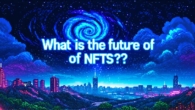
Is investing in NFT art worthwhile
Introduction
As the world of digital art and collectibles continues to evolve, non-fungible tokens (NFTs) have emerged as a new and exciting medium for creators to monetize their work. NFTs are unique digital assets that can be bought, sold, and traded on blockchain platforms, giving artists and collectors the ability to own and trade one-of-a-kind pieces of art in a secure and transparent manner. However, with the growing popularity of NFTs comes the question: Is investing in NFT art worthwhile?
Factors Affecting an NFT’s Value
The value of an NFT is determined by a variety of factors, including its rarity, demand, and cultural significance. These factors can be influenced by a range of factors, including the artist’s reputation, the quality and uniqueness of the artwork, and the overall state of the NFT market.
Rarity
One of the primary factors that determine an NFT’s value is its rarity. The scarcity of an NFT can make it more valuable to collectors, as they may be willing to pay a premium for a unique piece of art that cannot be easily replicated. Artists can increase the rarity of their NFTs by limiting the number of tokens they create or by making their artwork available in different editions with varying levels of uniqueness.
Demand
Another key factor that affects an NFT’s value is demand. If there is a high demand for a particular piece of art, collectors may be willing to pay a premium for it, driving up its value. However, if demand for an NFT is low, its value may decrease over time. Artists can increase demand for their NFTs by promoting their work on social media, attending art fairs and events, and collaborating with other artists or influencers.
Cultural Significance
The cultural significance of an NFT can also play a role in its value. If an NFT represents a piece of art that has cultural importance or resonance, it may be more valuable to collectors. For example, an NFT representing a piece of art by a famous artist or one that is related to a popular movie, TV show, or game may be more valuable than an NFT representing less well-known artwork.
Market Trends and Data
To better understand the potential value of an NFT, it’s important to keep an eye on market trends and data. By analyzing the prices of successful NFTs and tracking sales data, investors can get a sense of what types of art are in demand and what factors are driving up or down the value of NFTs.
Case Studies and Personal Experiences
One of the best ways to understand the potential rewards and risks of investing in NFT art is to examine real-life examples and personal experiences from successful NFT investors. Here are a few case studies that demonstrate how investing in NFT art can be both profitable and risky:
Case Study 1: Beeple’s “Everydays: All the Dreams Belong”

In May 2021, artist Mike Winkelmann (better known as Beeple) sold an NFT representing his artwork “Everydays: All the Dreams Belong” for a record-breaking $69 million at Christie’s. The NFT, which depicts a collage of images from the past decade, became the most expensive piece of art ever sold at auction, surpassing the previous record held by Leonardo da Vinci’s “Mona Lisa.”
Beeple’s success with “Everydays” is a testament to the potential rewards of investing in NFT art. However, it also highlights the risks involved, as the value of an NFT can be highly volatile and subject to market fluctuations.







